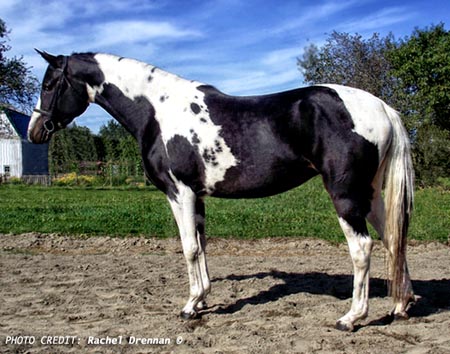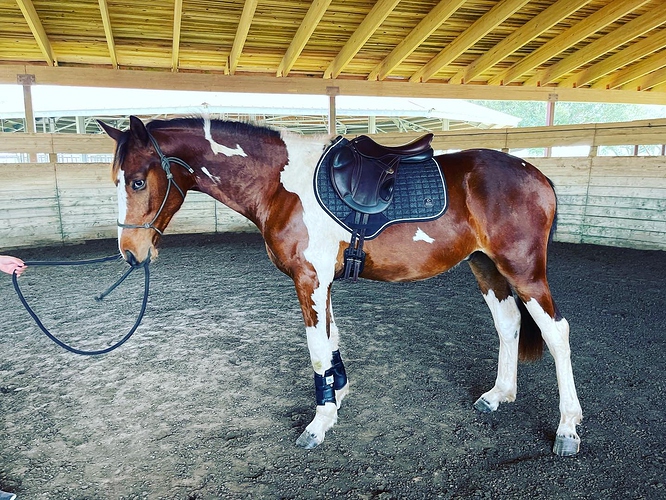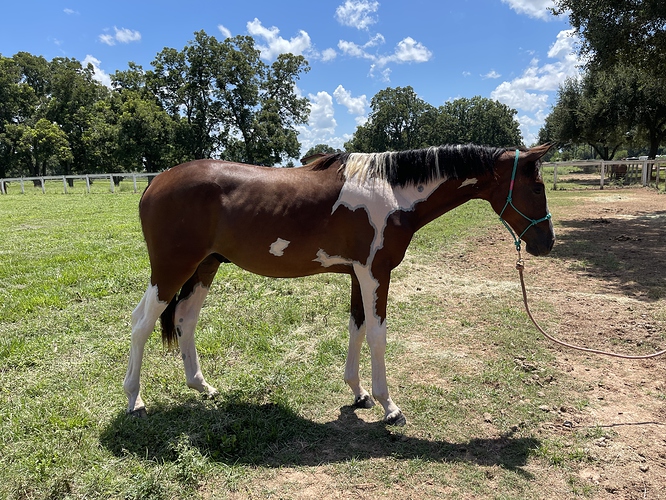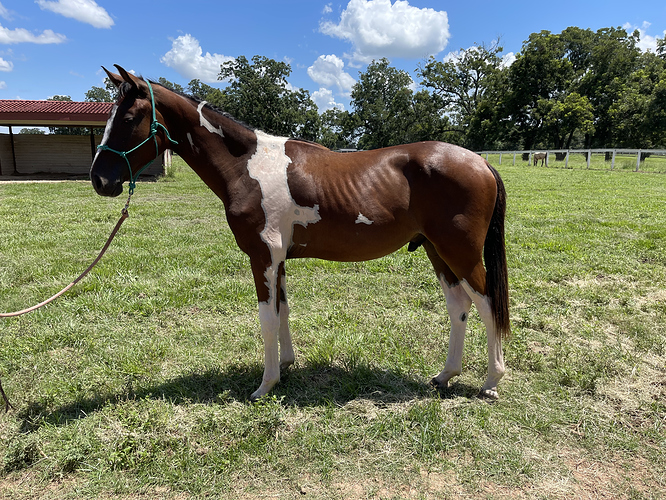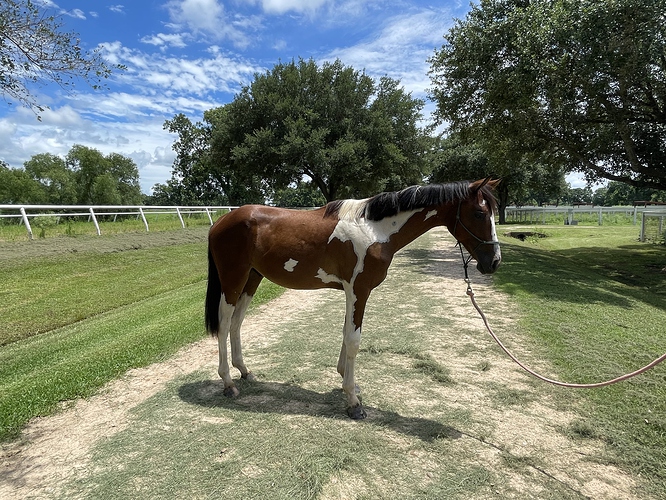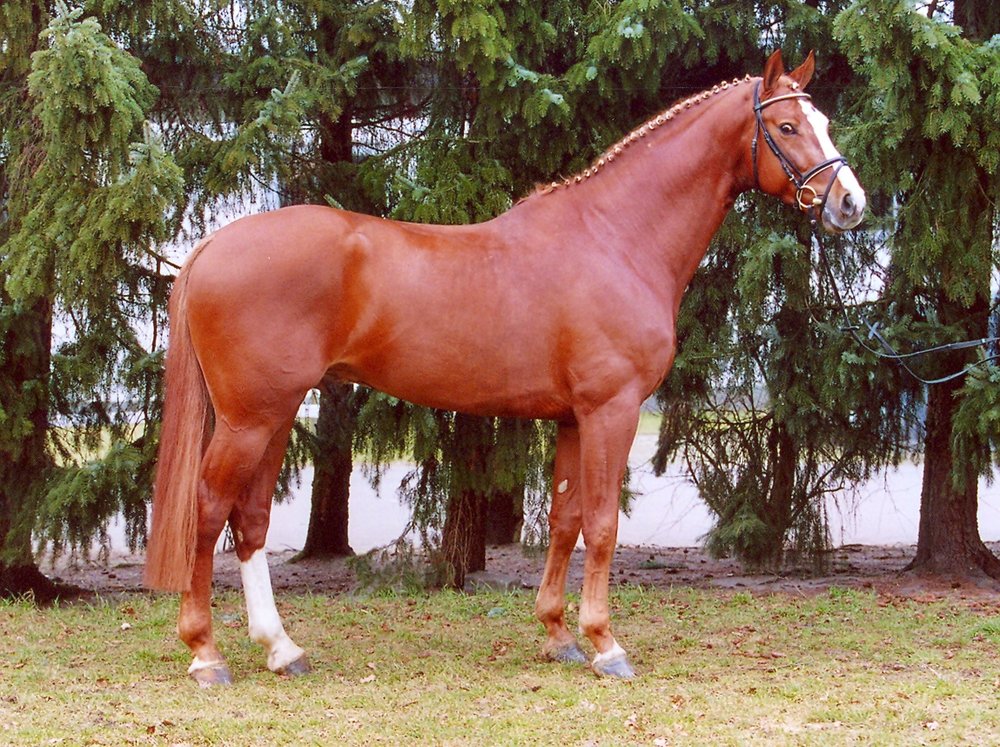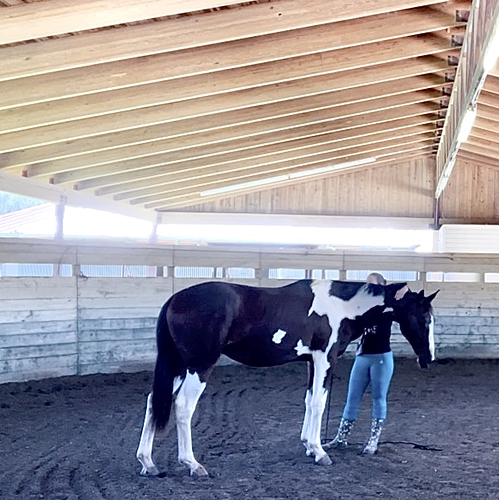None of the pictures are very good to see him as a whole, for different reasons having to do with the relationship of the camera to the horse.
I’ll try to piece things together from different pics that show different parts well enough.
The nice thing about functional conformation is that it doesn’t change, once they unfold. These things tell you the general balance of the horse, whether he is functionally heavier, or lighter, in front, how well he will be able to use his hind end, and how those things, combined with the other aspects of of his confo, suggest he will hold up to long-term athletic use.
Functional conformation is 3 parts:
-
Pillar of support - the relationship between a vertical line through crease in the forearm muscles and withers, with that line needing to be well in front of the withers, and that crease in the forearm muscles and hoof, with that line intersecting the back of the foot
-
Lumbosacral gap (LS gap) placement - the “gap” between the last thoracic vertebra, and the sacrum, with this needing to be directly over the point of the hip
-
Neck emergence - at least above the point of the shoulder
Everything else is in addition to that - shoulder slope and length, shoulder angle (with the humerus), humerus length, pasterns, depth of hip, etc.
For this guy, his PoS is very good, nicely in front of his withers which helps keep his front end lighter, and right around the back of his foot which gives his legs the support they need.
His LS gap appears to be right where it should be. This will allow him the best use of being able to engage his hind end with proper flexion
His neck emergence is also where it should be - nicely above the point of shoulder, but not too much above (which starts heading into knife neck territory, not functional)
His shoulder slope is good, well in range of 45-55*. The angle (relationship to humerus) looks to be at least 90*, maybe 1-2* more, which is what you need, in order for him to be able to fold his legs well (if that angle is less than 90*, there’s less room for the angel to close). His shoulder confo lends itself to getting knees up, and legs folded, over fences.
Only the 3rd pic shows his hind legs well enough, and he’s a little straight, like his dam. Not enough to make me concerned. Some feel this gives then better ability to coil and push off over fences, and certainly there are a number of upper level Event horses with a straighter hind leg configuration. The rest of his Big 3 are good enough that this is less of a concern, than if any of those 3 were not good.
He looks to have taken after his dam in the leg department in terms of angles, as his sire is more upright in his pasterns, and with more angle to his hocks.
You can’t look at just a single body part and declare it a problem for the horse, with a few exceptions. There are some very serious faults, like a structural ewe neck, truly posty hocks, extremely sickle-hocked, which all by themselves really take the chances of sounder long-term athletic use off the table.
Straighter hocks by themselves aren’t a problem. What’s above the hind legs, and what’s in the front of the horse? These hocks (the OP) in a horse with a terrible pillar of support and neck emergence, would be a big problem adding on to those. But they do have decent angles (just not GREAT), and he’s got a functionally light front end, so no inherent concerns.
His dam is very similar in this way, so I’d look to how she’s holding up. Keep a great trimming schedule, make sure you know what feet should look like in terms of toes and heels where they belong, and I suspect he’ll be just fine.
 he’s supposed to be my Eventing partner in the future. Right now he’s about 16.1-16.2 and he is 1 year and 10 months old. He is registered Westfalen NA
he’s supposed to be my Eventing partner in the future. Right now he’s about 16.1-16.2 and he is 1 year and 10 months old. He is registered Westfalen NA